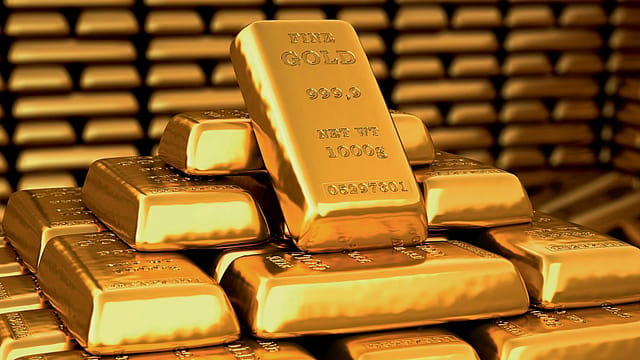Gold’s bull run: Can FY26 sustain the rally or will headwinds slow it down?
ADVERTISEMENT

Gold ended FY25 on a high note, delivering robust returns amid global economic uncertainties and geopolitical tensions. The yellow metal saw significant appreciation, driven by persistent inflation concerns, a weakening US dollar for part of the year, and its traditional safe-haven appeal. As FY26 begins, the outlook for gold remains under scrutiny, with analysts pointing to a complex mix of factors that could shape its trajectory. Will the drivers of FY25’s gains persist, or will new challenges and opportunities emerge?
Prithviraj Kothari, Managing Director of RiddiSiddhi Bullions Limited (RSBL), said, “Gold prices have been rising since December 18 due to multiple concerns, including Trump’s tariff policies, inflation pressures, the expanding U.S. fiscal debt, and geopolitical tensions in the Middle East and Ukraine. These factors have driven gold futures up by an astounding 17%, from about $2,620 to $3,065. After reaching the $3,000 (~₹88,000) milestone and extending the rally to $3,065 (~₹89,800), gold appears to be facing short-term exhaustion. We could see profit booking and a 3-4% price retracement at these levels,” Kothari noted. However, he added, “This retracement should be seen as a buying opportunity.”
Gold’s rally has been fueled by de-globalization, trade wars, and the accelerating shift away from the U.S. dollar. Anindya Banerjee, SVP, Head of Research – Currency, Commodity, and Interest Rates at Kotak Securities, highlighted the long-term impact of these trends. “The ‘America First’ policy is intensifying the risk of a hard US-China decoupling, slowing growth, and raising financial risk premiums. As the world moves toward a de-globalized, de-dollarized, and multipolar order, central banks and institutions are accumulating gold as a stability anchor. This could push prices toward $3,500 or higher by the end of 2025,” he said.
December 2025
The annual Fortune 500 India list, the definitive compendium of corporate performance, is out. This year, the cumulative revenue of the Fortune 500 India companies has breached $2 trillion for the first time. Plus, find out which are the Best B-schools in India.
Gold prices surged approximately 15.4% globally and 14% in the domestic market in FY25, marking one of the strongest years for the metal in a decade. This remarkable rise was primarily driven by falling interest rates, geopolitical tensions, and strong central bank demand. “The RBI purchased 32.63 tonnes of gold in the first half of FY25, increasing its total reserves to 854.73 tonnes. By March 2025, gold prices reached an all-time high, surpassing $3,000 per ounce, driven by expectations of U.S. Federal Reserve interest rate cuts,” said Colin Shah, MD, Kama Jewellery.
Looking ahead, Shah expects gold’s upward trend to continue in FY26, supported by further rate cuts by the U.S. Fed, ongoing geopolitical tensions, and Trump’s tariff threats. “These factors will drive gold prices higher. However, challenges like a strengthening U.S. dollar and shifting investor preferences towards other asset classes could impact gold’s performance,” he added.
Supply constraints have also played a role. A shortage at London warehouses, combined with Trump’s tariff threats, created a price gap between London and New York, fueling market panic and boosting gold demand.
Manav Modi, Senior Analyst – Commodity Research at Motilal Oswal Financial Services, predicts further upside despite possible corrections. “We believe market corrections could provide buying opportunities. We maintain our targets of ₹90,000–₹91,000 domestically and, assuming USDINR at 87, around $3,100 on Comex. Buying on dips is recommended from a 12-15 month perspective,” he said.
While sustained inflation and delayed rate cuts could strengthen gold’s position, Adhil Shetty, CEO of BankBazaar.com, advises a balanced approach. “Gold should be viewed as a strategic asset for portfolio diversification rather than a primary wealth-creation tool. While equities typically yield higher long-term gains, gold provides valuable diversification. A 5-10% allocation through ETFs and sovereign gold bonds can hedge against market fluctuations. Investors prioritizing portfolio stability should take a long-term approach rather than engaging in speculative market timing,” Shetty said.
With FY26 underway, the key question remains: will gold sustain its momentum, or will global economic shifts and policy changes bring a new dynamic to the market?
